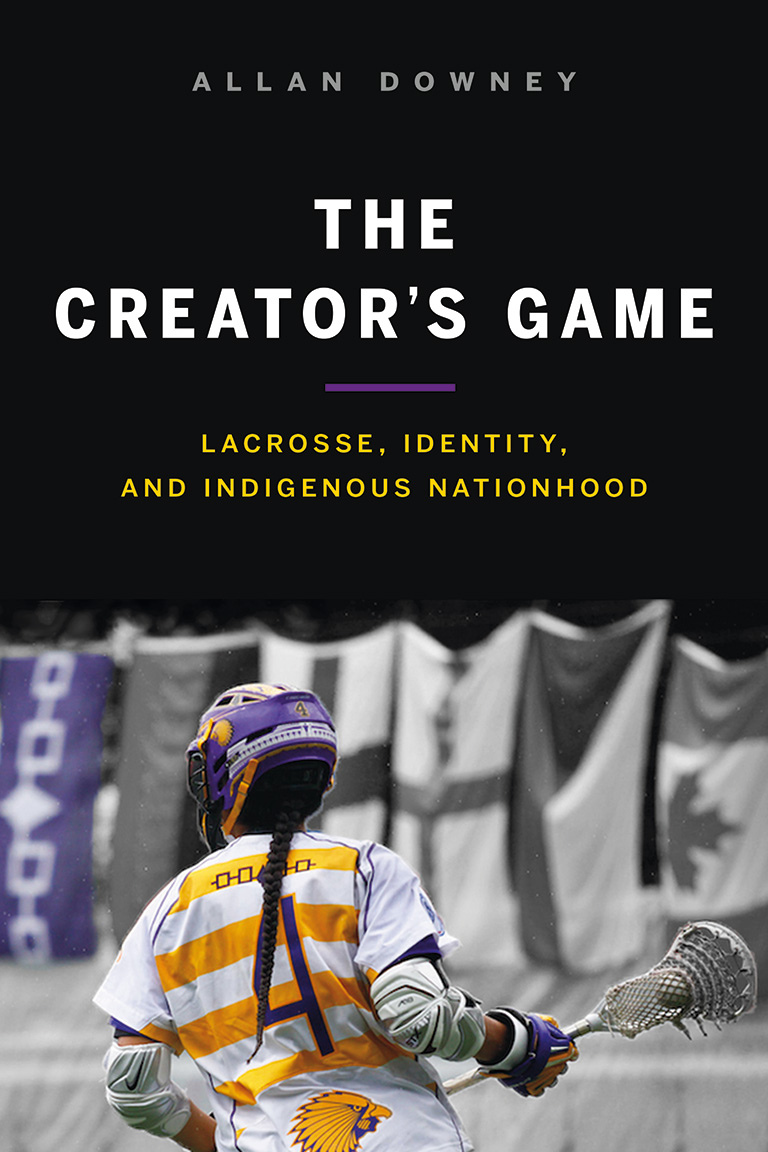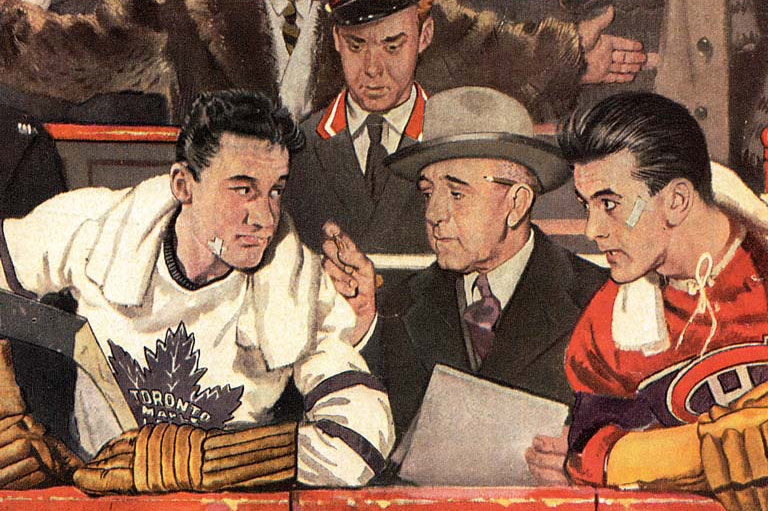The Creator’s Game

The Creator’s Game: Lacrosse, Identity, and Indigenous Nationhood
by Allan Downey
UBC Press, 363 pages, $34.95
Many Canadians have only a passing awareness of lacrosse, or regarding the fact that it is Canada’s official national summer sport. In its heyday in the late nineteenth and early twentieth centuries, the sport was more popular than hockey and was widely viewed as an emblem of Canadian identity.
Even after the advent of the modern game, lacrosse continued to be of importance to the development of Indigenous nationhood in this country. In The Creator’s Game, Allan Downey aims to educate readers on these less well-known dimensions of lacrosse and its continuing significance for Indigenous people, in particular for the Haudenosaunee (Iroquois) of central Canada.
The book commences with a prologue on the Indigenous origins of lacrosse as related by an Elder of the Six Nations of the Grand River, in southwestern Ontario. While much of The Creator’s Game is a scholarly study of its subject, its innovative opening section reveals the author’s personal experience of Indigenous knowledge of the game, which adds authenticity and depth. It also signals to the reader that the author wishes to provide a significant reinterpretation of a very old game.
Like the modern sport of hockey, which also derived in part from Indigenous roots, lacrosse was developed by First Nations well before European contact. In the nineteenth century it was appropriated by Euro-Canadians and then repackaged and reinterpreted to represent their values and priorities. This process of appropriation largely occurred between 1860 and the 1990s. Still, Indigenous people found ways to retain lacrosse as a core symbol of their identity while excelling at the restyled sport and reclaiming it as their own.
In the context of the coercive and assimilationist practices of residential schools, Indigenous students found ways to play lacrosse and other sports as part of a strategy of survival through expressions of entertainment, pride, and resistance. Downey sees agency in their ability to navigate through these obstacles; he considers it a credit to the resourcefulness of Indigenous people that helps to explain their persistence through this dark chapter in Canadian history. The book is not solely devoted to central Canada. It also includes an illuminating chapter on lacrosse and Indigenous nationhood on the West Coast, where it was also a vehicle for Indigenous self-assertion in the face of colonial oppression.
Downey elaborates upon the symbolic significance of lacrosse for Indigenous peoples, including the socio-political and spiritual centrality of the lacrosse stick as a focus of Indigenous craftsmanship. The stick’s continuing importance is expressed in the modern-day Haudenosaunee practice of providing miniature wooden sticks to infants in their cradles.
The acceptance of the Six Nations’ Iroquois Nationals team to compete in the 1990 International Lacrosse Federation World Games in Perth, Australia, was a milestone. The team adopted the imagery of the Hiawatha Wampum Belt, which had been repatriated from the New York State Museum at Albany, as its flag. This symbol of sovereignty and pride illustrated the continuing importance of lacrosse to Indigenous identity.
Downey’s narrative culminates with the efforts of the Iroquois Nationals and the Haudenosaunee Nationals, a women’s team, to travel to compete in international competitions using their own Indigenous passports. While not yet successful, these initiatives have been important steps in the affirmation of Indigenous nations’ rights.
The book offers a good selection of historical photographs, including a panorama of an Indigenous lacrosse match that took place before a large Vancouver audience in 1911.
Downey describes the history of lacrosse as a “Trickster tale, full of anomalies, contradictions, and tricks.” He displays considerable writing and interpretive talents in demonstrating the importance of the game for the history and identity of Indigenous peoples.
Despite attempts by the Canadian state to deny their rights, Indigenous peoples found ways to reimagine lacrosse as a counter-narrative of Indigenous nationhood that challenged the very state that appropriated the sport. It will be fascinating to follow this story as it continues to unfold.
We hope you’ll help us continue to share fascinating stories about Canada’s past by making a donation to Canada’s History Society today.
We highlight our nation’s diverse past by telling stories that illuminate the people, places, and events that unite us as Canadians, and by making those stories accessible to everyone through our free online content.
We are a registered charity that depends on contributions from readers like you to share inspiring and informative stories with students and citizens of all ages — award-winning stories written by Canada’s top historians, authors, journalists, and history enthusiasts.
Any amount helps, or better yet, start a monthly donation today. Your support makes all the difference. Thank you!
Themes associated with this article
Advertisement
With 7 uniquely curated newsletters to choose from, we have something for everyone.




